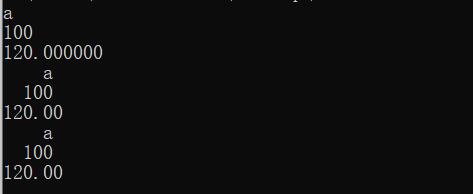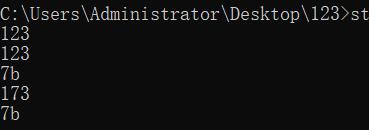C++输入与输出和格式化输出 C++的输入与输出和格式化输出
十月旧城 人气:0想了解C++的输入与输出和格式化输出的相关内容吗,十月旧城在本文为您仔细讲解C++输入与输出和格式化输出的相关知识和一些Code实例,欢迎阅读和指正,我们先划重点:C++输入,C++输出,C++格式化输出,下面大家一起来学习吧。
一、C++ 输入与输出 格式化输出
1.cin与cout

2.格式化输出
2.1设置域宽及位数
对于实型,cout 默认输出六位有效数据,setprecision(2) 可以设置有效位数,setprecision(n)<<setiosflags(ios::fixed)合用,可以设置小数点右边的位数。
#include <iostream>
#include <iomanip>
using namespace std;
int main()
{
printf("%c\n%d\n%f\n",'a',100,120.00);
printf("%5c\n%5d\n%6.2f\n",'a',100,120.00);
cout
<<setw(5)<<'a'<<endl
<<setw(5)<<100<<endl
<<setprecision(2)<<setiosflags(ios::fixed)<<120.00<<endl;
return 0;
}

2.2按进制输出
#include <iostream>
#include <iomanip>
using namespace std;
int main()
{
int i = 123;
cout<<i<<endl;
cout<<dec<<i<<endl;
cout<<hex<<i<<endl;
cout<<oct<<i<<endl;
cout<<setbase(16)<<i<<endl;
return 0;
}

2.3设置填充符
可以设置域宽的同时,设置左右对齐及填充字符。
#include <iostream>
#include <iomanip>
using namespace std;
int main()
{
cout<<setw(10)<<1234<<endl;
cout<<setw(10)<<setfill('0')<<1234<<endl;
cout<<setw(10)<<setfill('0')<<setiosflags(ios::left)<<1234<<endl;
cout<<setw(10)<<setfill('-')<<setiosflags(ios::right)<<1234<<endl;
return 0;
}

总结
本篇文章就到这里了,希望能够给你带来帮助,也希望您能够多多关注的更多内容!
加载全部内容